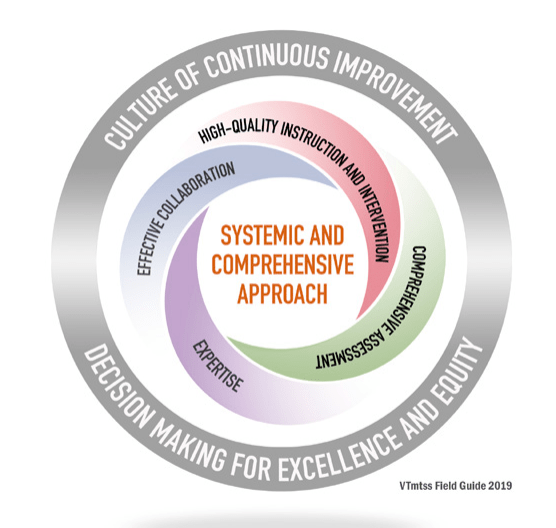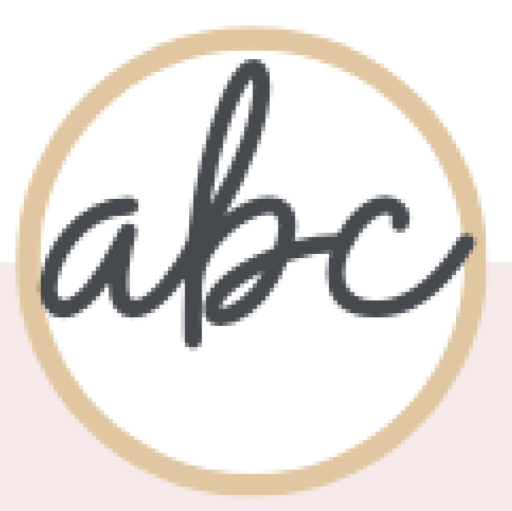What was a constraint you have faced in education and how did you overcome it? What lessons did you learn from that process?
As an elementary principal in the largest PreK-8 public school in central Vermont, we are faced with a number of constraints and hurdles in moving our work forward in education. As a systems thinker and positive problem-solver, I try not to let most of these constraints hold us back, instead, I view them as challenges that we can (and do) overcome. I am relieved to know that I’m not alone in this work. I was so excited when I started taking courses with Katie Novak on Universal Design for Learning – this work bridged my previous career experience in Interior Design with Education (a new-found passion for me – I became an educator in 2010) – it all made SO much sense to me! I became inspired yet again, when I came across the book Innovate Inside the Box by George Couros and Katie Novak. These are two extremely bright individuals who truly “get” the realities of the common constraints we are all faced with in education in 2023 – they ‘walk the talk’.

Overall, I would say that my team shares the same concerns that probably every educator shares – we need to rethink how we are using the limited time we have to focus on the highest priorities that will leverage the most effective impacts for all students. I could easily use this space to point fingers and list all of the reasons we feel we don’t have the time we need to do the work that needs to be done (ie district consolidation, lack of alignment, commitment, and direction from the district leadership team, faculty and staff contracts, competing factors for our limited time, differing values and priorities, etc.). However, I’d much rather share with you how we have reshaped and refined elements that are within our control at the local level (MTSS, Schedules, PD, & PLC’s) to use our time as effectively and efficiently as possible…it’s not perfect, but it’s progress!
It’s been a six-year process, but throughout my tenure as the PreK-4 Principal, we have restructured our Multi-Tiered Systems of Supports (MTSS) to better align with our school community needs throughout our building. We now have people in coaching capacities (instructional/curriculum, Diversity Equity and Inclusion (DEI), and Digital Learning Leaders (DLL)) to ensure all of our teachers and special educators are providing all students with high-quality first instruction. Our grade-level teams (along with embedded Special Educators on each team) have established horizontal alignment on the scope, sequence, and pacing of a cohesive curriculum – which has helped provide equitable access to learning experiences and opportunities regardless of which classroom a student is in. We are working towards having a clear understanding of the vertical progression of this curriculum, and our two-year looping configuration has really helped with this as well. (We did a schoolwide reconfiguration back in 2018-2019.) We also have a team of Educational Support Team (EST) Coordinators (who are content-specific – Social-Emotional, Literacy, and Math) to help teaching teams progress monitor targeted/skill-based intervention for students, and we have a team of content-specific and grade-banded specialists who are available to support teaching teams provide intensive interventions for students who demonstrate that need for additional layers of support. We now have a solid EST process where we can meet the needs of all students, and celebrate when they demonstrate achievement of their EST goal and being independent at a specific essential skill. Over the years, our faculty and staff have shifted their mindset around what intervention can look like, and that it is not always a linear process and it requires the adults to be flexible and adaptable based on changing student needs. (Something we still struggle with is how to prioritize when a student needs intervention in multiple areas – and again, our schedules just don’t allow for that time.)
As we were planning our year-at-a-glance professional development calendar over the summer, we had these grand plans of introducing our faculty and staff to the Universal Design for Learning Framework during our weekly early-release time. Unfortunately, there were way too many district initiatives that took priority, so we had to rethink how we could still incorporate UDL training into the school year. So, we decided to take the UDL approach to how we plan, engage, and present our various PD material to our faculty and staff – modeling how to offer voice and choice, and provide a fixed goal with flexible pathways – even on topics like Safety, DEI, Budget, Academic Programs/Software, new assessment tools, etc. We provide a reflection/exit ticket at the end of each session for people to share their takeaways and how they’ll apply their new learning in the classroom/school. By modeling elements of UDL, and having coaches available to co-plan, co-teach, observe, etc. we are embedding UDL into the culture of our school in a more authentic and meaningful way (as opposed to the stand and deliver PD/trainings with a 40-slide presentation our faculty and staff snored through in previous years).

While designing our school schedule for the year, we had to get really creative by adding more essential arts (ie Specials like art, music, PE, library, chorus, etc.) opportunities so that the teaching teams could have at least one common collaborative team time per week. We use this time to discuss problems of practice, curriculum revisions, success criteria/evidence, logistics of upcoming field trips, student concerns, etc. We moved our weekly Professional Learning Community meeting time to the second hour of our early release time. This is the first year that we have stipends for our PLC Facilitators (one per grade level), who will be participating in year-long data-analysis training and PLC’s at Work training as a vertical PLC to ensure that we are using this meeting time effectively with colleagues. This time is dedicated to reviewing student data (work samples) at the grade level, class, and student level answering one or more of the 4 PLC essential questions. This is where/when we might identify students who need additional support (either remediation, reteach, extension, etc.) to consider for EST. (The shifts we made to the schedule have been helpful, but may not be a sustainable practice moving forward.)
It would be great to connect with people who might have suggestions for how you and your school teams manage to fit it all in – or what you’ve decided to take off the plate! Please leave a comment or email me at acelmer@cvsdvt.org.



